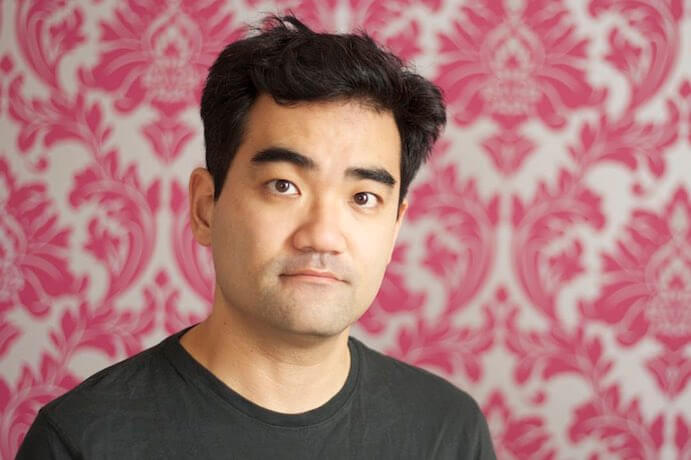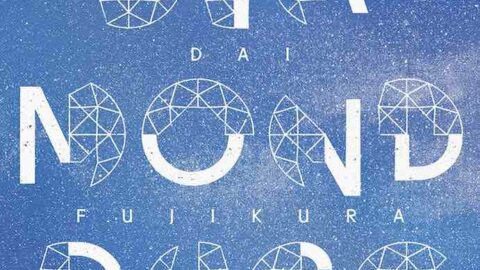What does it mean to write music of substance in 2019? In olden days, the turn of phrase separated “high art” from its various others, but such distinctions have rightly crumbled. Composer Dai Fujikura, known to collaborate with improvisers, pop iconoclasts, and modernist luminaries, makes substantive contributions to contemporary music across genres. To say that Diamond Dust, the latest album from Fujikura’s Minabel Records, has “substance” is therefore not to imply elitism. His sessions with Ensemble Nomad and a half-dozen soloists have given shape to music of diverse textures and timescales. From brittle sonorities to melting tones and airy flutters, Diamond Dust flows like a single substance’s journey between states.
Fujikura opens the album–which he recorded, edited, mixed, and mastered–with Reison Kuroda’s performance of Korokoro for solo shakuhachi. The work begins with an oscillation, produced by the technique that gives the piece its title. From this sound, more reminiscent of electronics than bamboo and breath, proceeds a poem of wavers, murmurs, and crystalline tones. Listeners may need a second, or sixth, listen just to confirm that Kuroda’s floating timbres all come from one instrument. Like all of the unaccompanied works on this album, Korokoro gives the player one overarching technical challenge to tackle throughout. The effect is absorbing, here as ever.
Diamond Dust–Piano Concerto no. 2 finds Mei Yi Foo playing controlled flurries of notes as Ensemble Nomad lurks behind. In liner notes, Fujikura imagines the chamber orchestra as a swarm of piano overtones with a hive-mind of its own. Listeners could as easily identify the piano as protagonist, fighting for stability as dark tendencies rise to the surface. Severe and smooth, Foo’s assertive, unflappable playing resists the lurching, listing orchestra that threatens to overtake it.

William Lang zooms between ambient hums and stings of sharper tone on the trombone solo Deliquesce. This time, the unaccompanied soloist’s paradoxically liberating limitation takes the form of an always-in wah-wah mute. Fujikura’s essay in buzzes and burbles never lapses into mere silliness–on the contrary. Lang can swerve like a distant sports car, only to roar like a chainsaw right behind you the next instant. The mechanical turns magical around seven minutes in, when Lang’s simultaneous performance of melody, chords, and mute manipulation approaches the uncanny.
Line by Line, a solo for violinist Viktoria Mullova, sounds much more like a duet. The piece’s title puns on the constant maintenance of two melodic lines, which trade positions in the spotlight. Mullova’s tone glows down low and shimmers high. Her ability to double-stop with independent rates of vibrato and shifts of volume confounds the ear. A hint of tragedy hovers around the recording, and not just because of the lonely high note that concludes it. The piece cries out to be heard live, rustles of human presence papering over the recording’s void of ambient emptiness.
Diamond Dust’s longest track consists of Fujikura’s Double Bass Concerto, here performed by Ensemble Nomad and its bassist Yoji Sato. The soloist mimics learning to play, first banging on the strings, then clawing at them, and finally plucking and bowing. The orchestra joins in gradually, winds and strings only appearing after five minutes of solo material with piano, harp, and percussion. The disc’s longest track and earliest work, this Concerto loses some of its initial variety in its final seven minutes. However, Sato holds attention throughout, knocking and sawing his way to booming blooms of warmth and icy glints.

Even at only four minutes’ duration, Yurayura makes a strong impression. Nobuaki Fukukawa plays this repurposed passage from Fujikura’s Horn Concerto no. 2 with his horn’s valves only halfway down. The resulting unearthly moan, somewhere between a theremin and an opera singer heard from two rooms away, slides about freely. Lang, Kuroda, and Mullova play with unusual sounds, but Fukukawa’s timbre transcends the standard palette of the horn altogether.
As the eighth release from Mirabel–so far, entirely devoted to collections of Fujikura’s work–Diamond Dust has a character all its own. For lovers of grand scale and dense harmony, as well as virtuosic solo playing, the concertos will scratch those itches. However, the unaccompanied pieces offer the most vivid glimpses into Fujikura and his collaborators’ musical worlds. A sort of quiet accompanist to Kuroda, Lang, Mullova, and Fukukawa, Fujikura wraps them in warm blankets of resonance. Against this backdrop, the substance of these performers’ expressions stands in sharp relief.
























